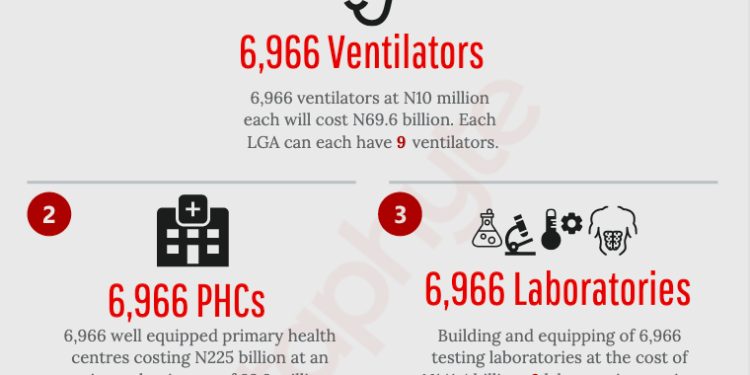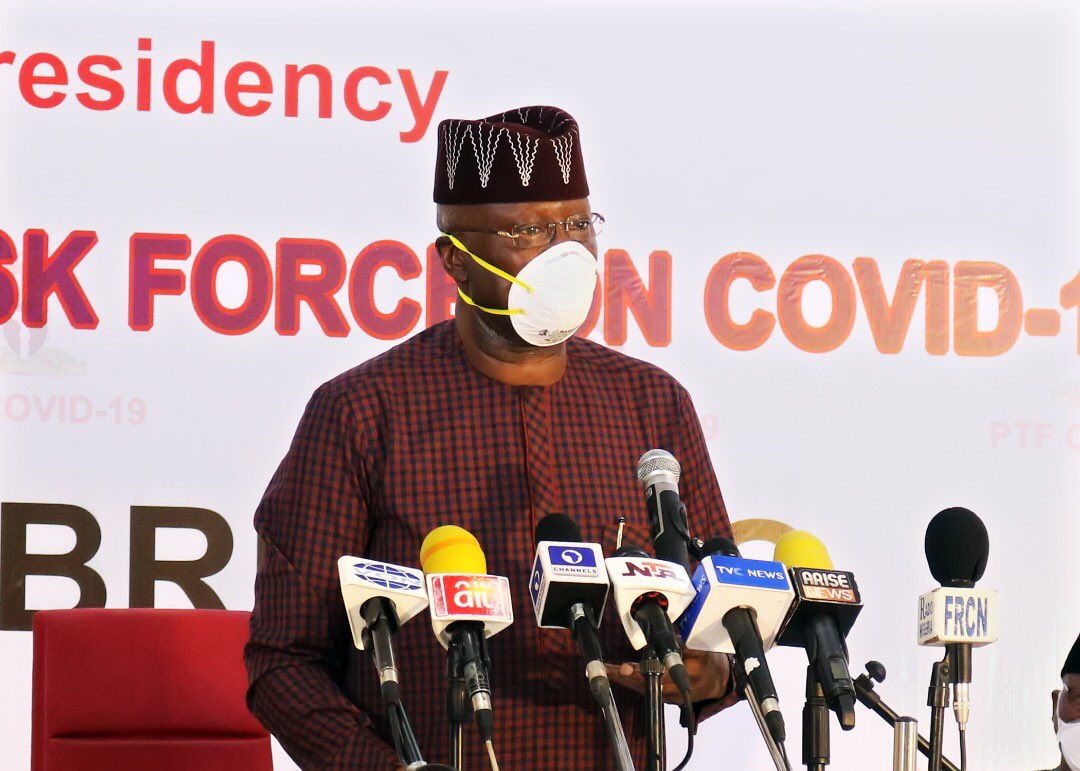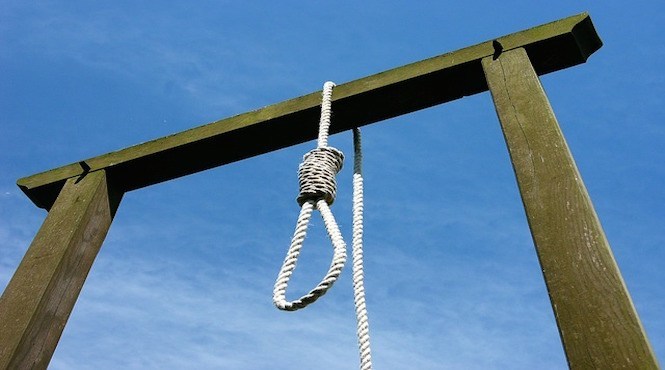BY DATAPHYTE
Just like many other countries, Nigeria is currently in an unpleasant situation with the rise in cases of Coronavirus pandemic. The virus, spread across the world, has infected over two million people and more than 180,000 have died. Across many nations, authorities have ordered many individuals to stay at home to curb the widespread of the deadly virus.
As of April 21, 2020, Nigeria had recorded confirmed 665 cases, of which 188 have been discharged and 22 deaths recorded. Experts have repeatedly warned of a possible spike in cases in the country amidst difficulty to enforce lockdown in many states.
COVID-19 is a respecter of no one regardless of age, position or gender as many nations’ leaders also have their share. In fact, last weekend, Nigeria lost Abba Kyari, chief of staff to President Muhammadu Buhari, to the deadly virus. While experts are still in search of a vaccine, the World Health Organisation (WHO) said the only vaccine at the moment is to “stay at home”.
Advertisement
In April, the federal government had targetted 500 billion special funds for the fight against coronavirus. Meanwhile, DATAPHYTE analysis shows that if properly managed, the funds have the potential of boosting Nigeria’s health sectors across all local government areas in the country.
The funds could provide each of the 774 local governments in Nigeria nine ventilators, construction and equipment of nine laboratory centres, employment of 18 health workers and at least one laboratory scientist, DATAPHYTE analysis shows.
Provided the N500 billion intervention fund gets legislative approval, it would require strategic management to respond to the immediate crisis with COVID-19. Meanwhile, it is of utmost importance that necessary quarters charged with the responsibility to contain the virus use the funds judiciously to respond to key challenges in the health sector.
Advertisement
If shared equally across all Local Government Areas (LGAs), each will get about N640 million which can help in providing a complementary healthcare system to successfully contain the spread of the virus in the country.
Using cost estimation sourced from the budget document of the federal government and reliable web platforms, DATAPHYTE computes what N640 million could do for each of the LGAs.
6,966 Ventilators across 774 LGAs

Advertisement
The shortage of ventilators in the country has been a source of concern for many Nigerians including lawmakers and public health experts. Currently, there is a global scramble for ventilators following the outbreak of the coronavirus. Countries like the United States and China have ramped up the manufacture and supply of ventilators to deal with the growing cases of the disease in their countries.
Though the exact number of ventilators in Nigeria is unknown, the number of functional ones in the country is estimated to be under 500. Experts have said Nigeria needs 10,000 Ventilators and based on the estimated number, the country has a deficit of 9,831 ventilators. With the N500 billion, the country can afford 6,966 ventilators at N10 million each. If properly shared, each of the LGAs will get 9 ventilators at the total cost of N69.6 Billion and the country will still have N430 billion balance.
6,966 Testing Centres and Laboratory Equipment
One of the most criticised aspects of Coronavirus menace in Nigeria is testing centres. The country has so far tested less than 10, 000 residents in comparison to countries like South Africa and Ghana with less population. Our inability to do this cannot be disconnected from lack of enough testing facilities as the country has thirteen (13) laboratory centres across states which is not enough to fight the pandemic.
Advertisement
According to Olarinde Joshua, an architect, it would cost N9 million to construct a mini laboratory. A laboratory will require health equipment like testing kits including microscope electrophoresis machine, micro Hematocrit Centrifuge, incubator, weighing scale, reagents, etc, DATAPHYTE’s Price review and checks showed that these laboratory equipment will cost about N11.3 million, this means the government will construct and equip a mini laboratory for N20.3 million.
From N430 billion remaining, each local government can have nine laboratory centres with equipment, worth N182.7 million and the required biosafety materials such as biosafety cabinets and personal protective equipment needed to keep frontline healthcare workers safe in all states in Nigeria and help increase testing capacity in the country.
Advertisement
With N20.3 million for construction and equipping of a laboratory, it will cost N141.4 billion to have the same in 774 LGAs. By simple arithmetic, added to the 69.9 billion for ventilators, the sum will be 211.3 billion. The balance from N500 billion is N288.7 billion.
A total of 6,966 fully equipped primary health centres
Advertisement
With the inadequate health care centres in Nigeria and going by the Universal Declaration on Human Rights, Nigeria needs more than enough well equipped primary health centres across local government areas for easy accessibility of people in the community.
These health care centres are crucial during and post COVID-19. They serve as the first point of call for ailing residents. According to Architect Olarinde Joshua, it would cost N15 million to build a standard Primary Health Centre.
Advertisement
DATAPHYTE’s research showed that a Primary Health Centre would require basic health equipment like Emergency equipment and supplies (airways, aspirators, oxygen, mask, resuscitation bag/mask, etc.) Electrocardiography (ECG) unit and accessories, Personal Protective Equipment (gloves, facemasks), Stethoscopes, Microscope, sonogram machine, labour bed, Scaling machine, ambulance, Washing basin, running water, toilet, light and etc. According to Olatunji Omololu who works at Grover Medical’s Lifestyle Clinic Victoria Island, Lagos, and our price survey of these equipment shows that equipping a primary healthcare centre is estimated to cost N17.3 million.
Therefore, with N15 million for construction and another N17.3 million to equip, It makes a total of N32.3 million for a well equipped primary health centre in Nigeria. A careful analysis shows that the country can afford 6,966 primary health centres across LGAs with each having nine Primary Healthcare Centres at the estimate of N225 billion in total, remaining N63.7 billion.
N63.7 billion to hire 13,932 health officials
While many people can afford to stay home, this is not the same with health workers in different isolation centres in different states with confirmed cases. From the remaining N63.7 billion, the government can afford to employ 13,932 health officials and pay them an annual salary of N3,000,000.
With this, each local government will have at least 18 health officials to operate in the new primary health care centres to be built at the cost of 54 million, 2 health officials per primary health centre.
The cost of employing additional 13,932 health officials across LGAs with an annual salary of N3 million is estimated to cost N41.7 billion.
N16.7 billion for 6,966 laboratory scientists

A laboratory scientist also has an important responsibility in promoting the practice of public health as they perform diagnostic analyses on body fluids such as blood, urine, sputum, stool, as well as other specimens. Medical laboratory scientists work in clinical laboratories at hospitals, reference labs, biotechnology labs and non-clinical industrial labs.
From the remaining N22 billion, the government can afford to hire 6,966 laboratory scientists with a sum of N2.4 million per year. With this, each local government will have 9 laboratory scientists in the new laboratory centres to be built at the cost of N21.6 million, one lab scientist per laboratory centre.
The cost of hiring 6,966 laboratory centres across LGAs with the annual pay of N2.4 million is estimated to cost N16.7 billion.
Altogether, the equipment and human resources across the country will cost N493.8 billion and about N6 billion will be left for logistics purposes.
State of diseases and deaths
UNICEF (2016) reported that preventable or treatable infectious diseases account for 71% of the estimated 1 million deaths of under-fives in Nigeria every year, with deaths being attributable to malaria (24%), pneumonia (20%), diarrhoea (16%), measles (6%), and HIV/Aids (5%). From the number of people who die from Lassa fever, tuberculosis, to mothers who die during childbirth or children who die due to malaria or malnutrition, the statistics reveal a terrible state of Nigeria’s healthcare system.
According to the current National Health Policy document, which was last revised in 1996, local government authorities are mandated to implement primary health policies and programmes. This is further supported by the PHCUOR programmes which pushes for the administration, financing, monitoring and evaluation, under the LG administration. While the state and federal governments are financiers based on the policy framework, the burden of LG-level procurement has not been relinquished to the local government authorities.
Dataphyte is an end to end, data as a service company.
Add a comment






